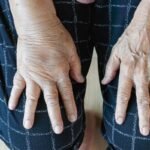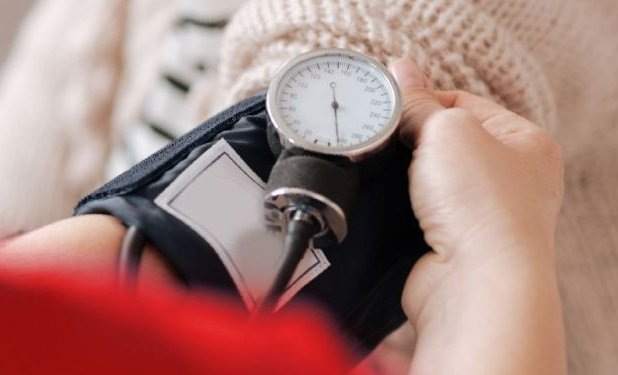Fluid retention is a condition with a wide variety of causes. In some cases, it can cause discomfort, body deformities, or even be the first sign of a serious illness. Swollen legs, abdomen, and feet are common symptoms of fluid retention or edema. But how do I know if I have fluid retention?
We’ll tell you which doctor to see for fluid retention and some effective remedies to combat it, such as herbal teas, pills, and low-sodium foods.
What is fluid retention?
Fluid retention, or edema, is a swelling caused by excess interstitial fluid, which is the fluid that lines and surrounds cells. It occurs when the body is unable to balance fluid production and is more common in women.
Edema usually forms around the ankles and legs. However, it’s not unusual for fluid accumulations to also appear in the stomach , eyelids , arms , or hands .
It’s important to note that fluid retention is an abnormal reaction. Although the body is made up of 50% to 60% water, it’s usually able to regulate itself.
Causes of fluid retention
This condition doesn’t always have a single cause. The causes of fluid retention are varied. Furthermore, its onset is gradual and usually becomes apparent over the years.
- Hormonal changes. This is common in women due to hormonal changes brought on by pregnancy, menstrual cycles, or menopause.
- A diet with excessive salt. Symptoms may also occur when there is a lack of vitamin B.
- Circulatory diseases, such as venous return circulation problems or varicose veins. These usually occur in older people.
- Kidney diseases that prevent the body from properly eliminating fluid. Liver diseases are also considered a cause of fluid retention.
- Some types of cancer, such as kidney, ovarian, or liver cancer.
Factors contributing to this problem
Certain lifestyles make it difficult to eliminate fluids from the system. For example, spending long periods on your feet is often a cause of fluid retention in the legs.
A sedentary lifestyle also accelerates the onset of edema in the body because it prevents the body from balancing fluid production. Furthermore, some experts point out that poor body hydration also accelerates the symptoms of this condition.
Finally, it’s worth noting the use of some medications that can cause fluid buildup. Estrogens, corticosteroids, nonsteroidal anti-inflammatory drugs, and blood pressure pills are considered to accelerate this condition.
Symptoms of fluid retention
How do I know if I have fluid retention? These are the symptoms of this condition.
- Feeling of heaviness.
- Notice that the clothing is tighter than normal.
- Swelling in some parts of the body, such as the knees or feet.
- Appearance of lumps on the legs due to poor circulation.
- Urinating less frequently than usual.
- Tighter and brighter skin.
- Gain weight.
- Stiffness in the joints, especially in the ankles and fingers.
- In the most severe cases, a symptom of fluid retention is when you run your finger over a part of your body and the print remains on the skin for a few seconds.
Fluid retention in the legs: treatment
If you suffer from fluid retention, it’s always a good idea to seek medical supervision. Treatment for this condition begins with addressing the underlying condition. Many people who suffer from this condition also suffer from heart failure.
Additionally, treatment for fluid retention is based on diuretics such as ASA or furosemide. However, you should not take them without the advice of a medical professional.
Food recommendations for fluid retention
Improving your diet is essential to help your body manage fluids. To achieve this, experts recommend eating the following foods to combat fluid retention :
- Parsley. Contains diuretic compounds.
- Artichoke. It is digestive and supports kidney function.
- Asparagus. It’s one of the best natural diuretics, making it an ideal food for fluid retention.
- Celery. It is composed of 95% water and promotes water elimination.
- Watermelon and cantaloupe . They help eliminate excess water and sodium and are high in electrolytes.
- Lemon. It is a powerful diuretic and antioxidant.
- Eggplant. It has low levels of membership.
- Kiwi. Helps relieve the feeling of bloating.
- Zucchini. This vegetable also has cleansing and detoxifying properties.
- Cucumber. It’s a very hydrating food. It also promotes fluid circulation in the body.
- Pineapple. It facilitates digestion thanks to its richness in bromelain.
Home and natural remedies to eliminate fluid retention
In addition to diet, there are some home remedies worth trying to eliminate fluid retention. Here are some ideas!
Drink 1.5 liters of water a day
Although it may sound contradictory, keeping your body hydrated stimulates fluid control. Drinking water facilitates detoxification and restores fluid balance.
Drink infusions for fluid retention
Some herbs have properties that make it easier to go to the bathroom more often. Try infusions of elderberry, dandelion, horsetail, or birch.
Prepare detoxifying vegetable broths
A broth made with onion, celery, or parsley helps cleanse the body. You can choose to have it as a snack between main meals.
How to avoid fluid retention: tips and habits
Put the following habits into practice.
1. Eliminate recipes with excess salt
If you suffer from fluid retention, it’s important to avoid pre-cooked meals, fast food, and frozen foods. Also, try to avoid the following foods :
- Smoked.
- Pickles.
- Cured or semi-cured cheeses.
- Delicatessen.
- Salted nuts.
- Drinks with high mineral content, such as Aquarius or flavored waters.
- Sauces of all kinds, especially ketchup, soy sauce, and mustard.
2. Do 30 minutes of exercise daily
Practicing a sport will improve your physical fitness. You can choose the one you like best: walking, dancing, a little swimming, or some gym time.
3. Wear elastic stockings
This type of garment exerts a certain pressure on the blood vessels, stimulating venous return.
4. Move your legs
Literally! Doing leg exercises, such as elevating your legs while sitting or lying down, will help eliminate fluid retention in your legs.
5. Avoid standing for hours
If your job requires you to stand for long periods or you tend to do so daily, remember to sit down from time to time to release the tension in your legs.
Frequently Asked Questions
How do I know if I have fluid retention or if it’s fat?
To find out if you have fluid retention, lightly press on the swollen area of your body . If your fingers leave the outline of the swollen area for a few seconds, it means it’s fluid retention, not fat.
What fluids should you drink or avoid if you have fluid retention?
For fluid retention, you should drink diuretic beverages such as vegetable broth or herbal teas. You should avoid beverages high in minerals or sodium, such as Aquarius or soft drinks.
What causes fluid retention?
There are several causes. It can be due to circulation problems, poor hydration, hormonal changes during pregnancy or menopause, or even a high-salt diet.
When should I seek medical attention if I suffer from fluid retention?
You should see a doctor if you feel short of breath or your heart rate increases rapidly.
Does it affect everyone equally?
Anyone can suffer from fluid accumulation, although women are more likely to suffer from it because this condition can be caused by hormonal changes.























+ There are no comments
Add yours